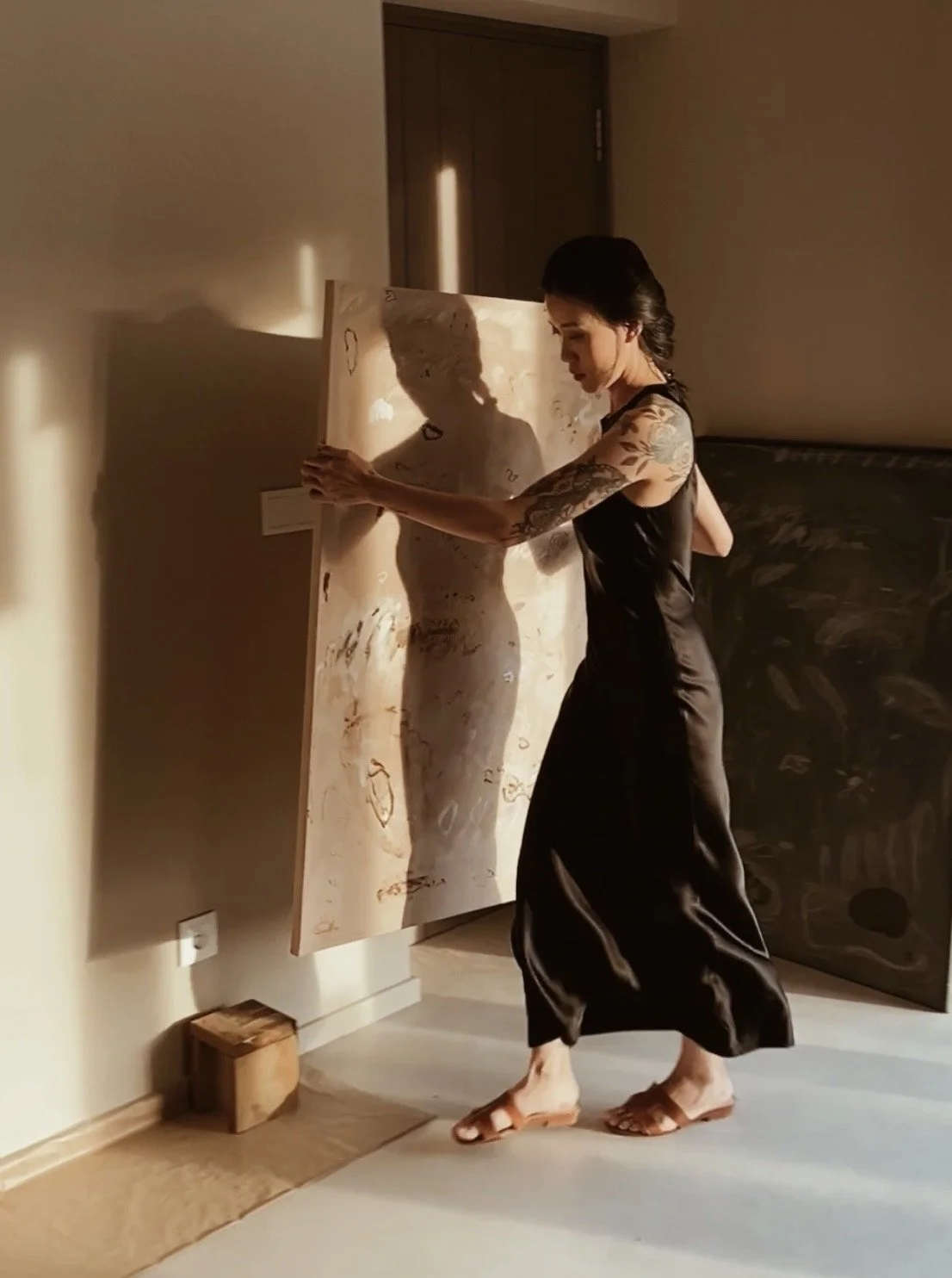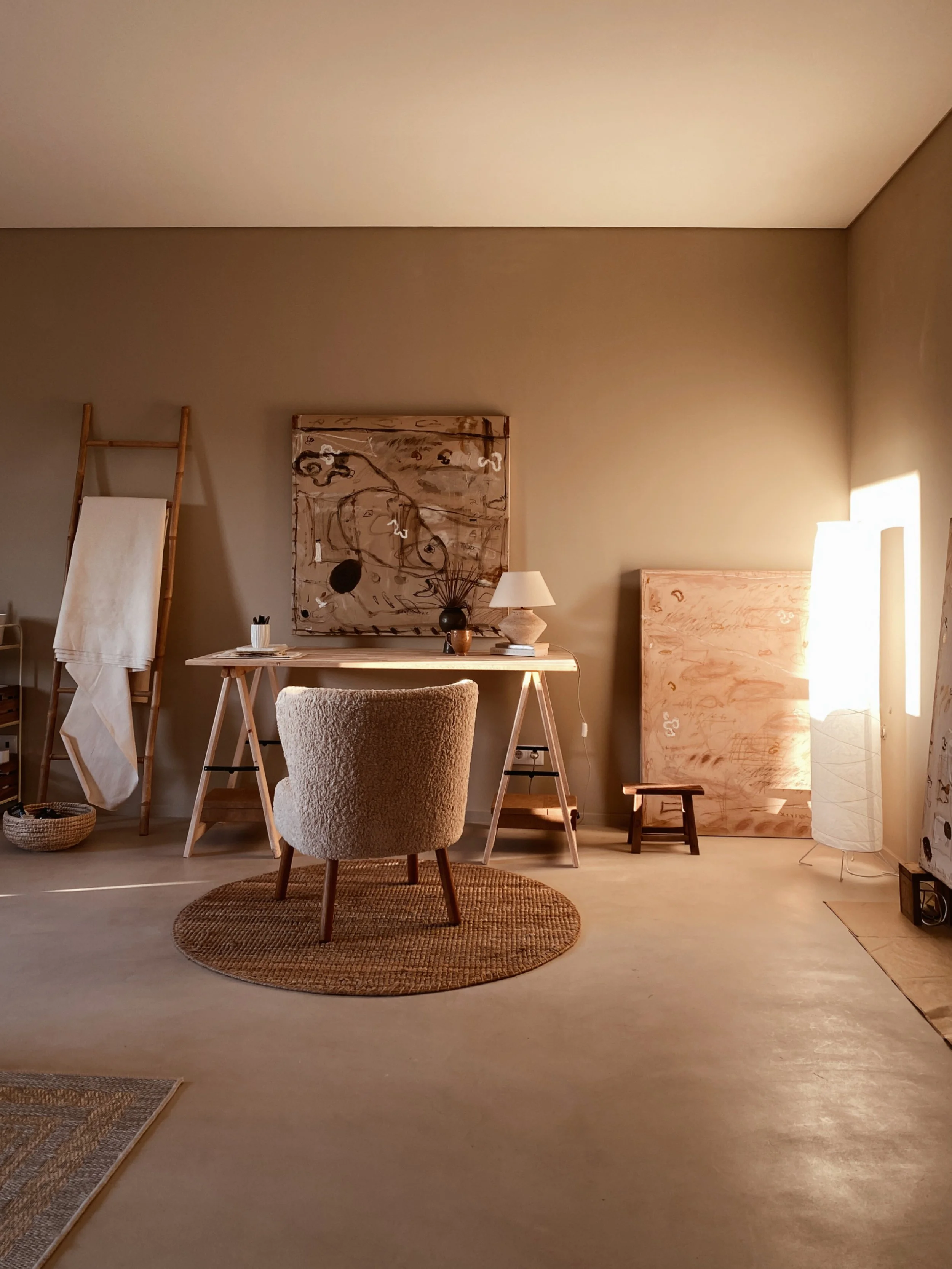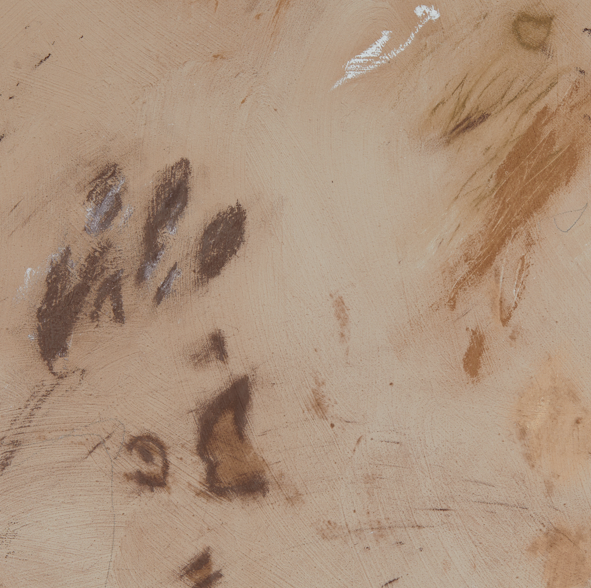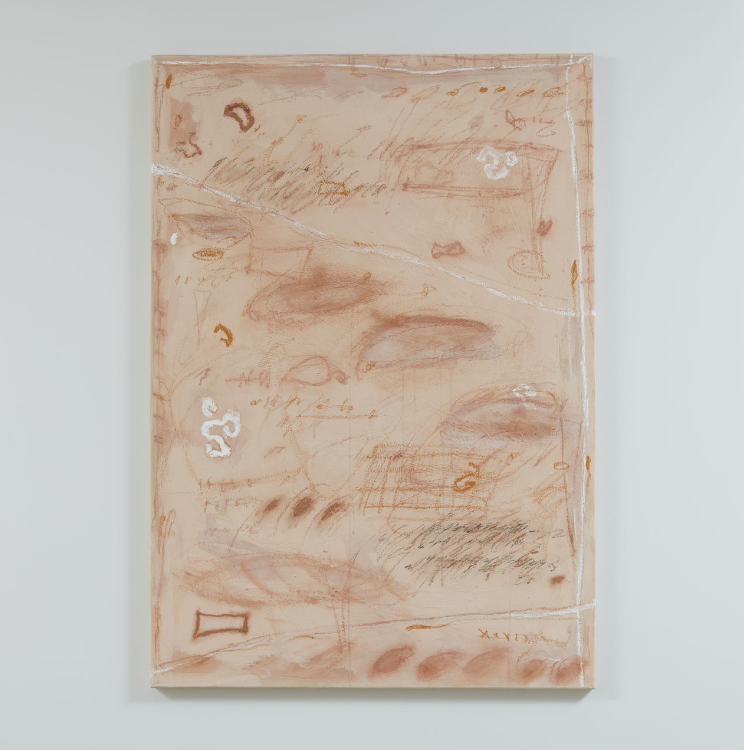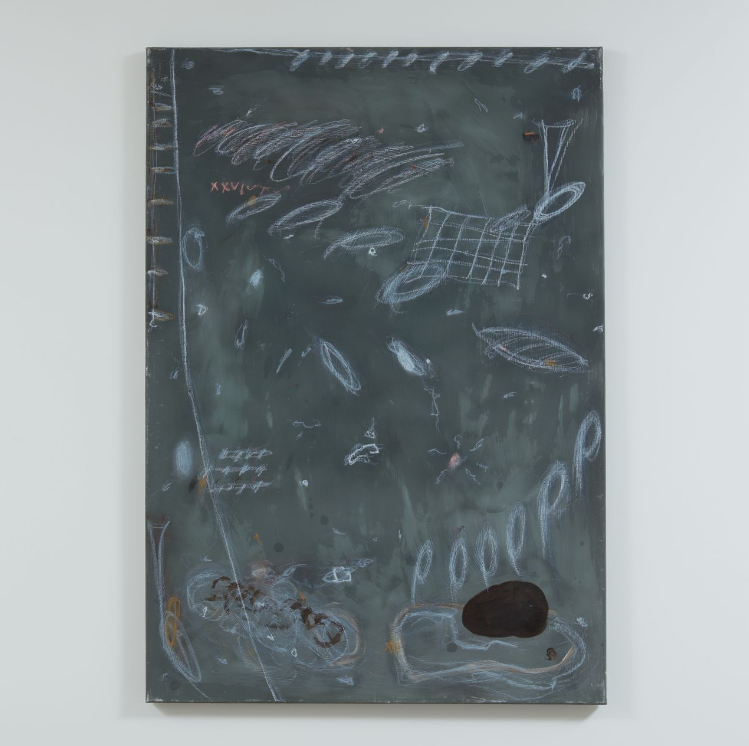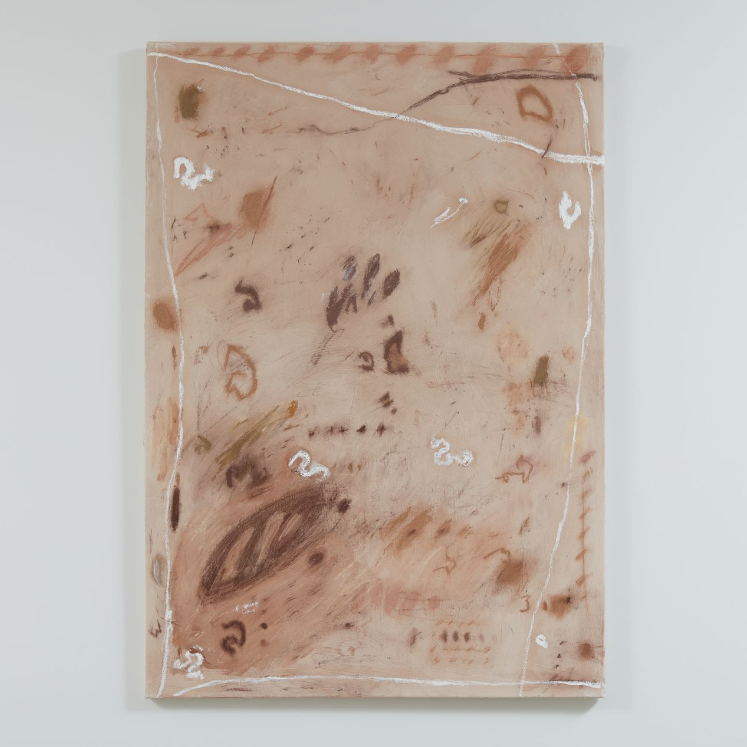HA HOANG
MAKER IN FOCUS - SEPTEMBER 2024
Inspired by primitive symbols, Hoang seeks to delve into the core essence of our shared human experience, evoking emotions and memories that transcend time and culture.
Does your work start from a sketch or do you just let your intuition take control while making?
I keep a small sketchbook for the purpose of a mental exercise to draw out shapes that I find interesting, notes on colours combination that I would like to explore, etc. and then I let these ideas seep through my mind, floating somewhere just on the peripheral vision of the subconscious. This way, when I am ready to work on a painting, I can use them as references to keep the process flowing. I have tried sketching before but the works always unfolded completely different from the sketch in the end. It’s kind of like kite flying, you can only train your skills so much, yet during the act, you go where the wind takes you. There is a profound joy in creating a new imagery as you go without the rigid walls that a pre-work sketch can box you in. I start with a feeling I want to convey, and I keep erasing, adding, smudging, chasing until it forms its own flesh.
You grew up in Vietnam, studied in America and now live in France. How has your style changed from country to country?
I grew up living with my grandparents in a small village in the north of Vietnam, and my dad was a shrimp farmer in the Mekong delta. I spent my childhood in nature collecting stones, fallen leaves, tree branches, strolling along riverbeds or in the garden collecting fruits with my grandpa. I learnt to pay attention to small details and found that nature is the best artist and poet. A large part of my adulthood I spent living in high rise towers and cities that never sleep – when my family moved to the South of Vietnam and when I came to America to study. I found myself immersed in all the flashing neon signs, vibrant sounds, constant people chatter … and I captured that feverish vigor of life through bright colors and clear-cut geometric shapes. Moving to France, living in the countryside with buildings date back to hundreds of years ago evokes a strange nostalgia for time past. Quietude in nature and old things slows me down and I “chameleon” into a more introspective way of living. I find a strange stillness in ancient architecture, abandoned ruins, in surfaces that acquire a patina over time - in things that carry the marks of time and wear history on their sleeves. All of these influences translate on to my creative process: from mimicking the textures of old stone walls to the spontaneous mark making and nonchalant brush strokes.
Your work is greatly influenced by the Japanese aesthetics of Wabi-Sabi, could you tell our readers a little about this and how it influences your practice?
I love the term “flawed beauty” when it comes to describing the essence of Wabi-sabi. For me, it comes first as a philosophy of life rather than just aesthetic. Having traversed through various cultures, I have seen in each place that I lived there were a certain standard of what features can be deemed “beautiful”, and people in each place people would chase after that standard like a non-spoken secret. If you just stay in one place, you are easily swayed to believe that beauty can only come in one form, a certain color, shape or size.
Things should always be planned, follow the rules, while accidents, damages, failures are negative. Yet if you zoom out, all these rules of beauty are just illusions, a social construct. Wabi-sabi offers a lens to look at life with a more humble, open-minded approach: a clay vessel with chips is still beautiful, a flower missing its petals after a storm does not lose its allure, a person with scars, bodies with “imperfections” … they are part of life. Nothing can escape the passage of time: all things grow, age, and decay. The way I approach my art-making is to honour this way of life, where “flawed beauty” is the universal truth.
We’ve just received some of your new works here at the gallery, what can our viewers expect from this new body of work and how would you describe your new selection of work at M.A.H?
This new body of works were developed during my 2-month stay in Portugal and also after my short vacation in Sicily, Italy. There is more use of colors - especially colorful pastels – in their architecture and design. You could walk down a street in Lisbon and see a street with 10 houses in 10 different shades of blue, pink, teal, coral, and endless intricate tiles walls. They also use a lot of red brick roof and it creates a beautiful contrast against the sky. These new colors and shapes bleed into my artmaking, and these new works reflect the charm of European summer in a more vivacious, joyful way than my previous calming, introspective works.
What can we expect from you in the future?
I would love to explore more with 3-dimentional works, whether it being sculptures or bring more dimensions into painting with additional materials like fabric, sand and wood. Other than that, I go wherever the wind takes me.
DISCOVER HA’S FULL COLLECTION HERE
Please contact the Gallery team on: enquiries@mah-gallery.com or call 020 898 100 86 if you are interested in learning more about Ha’s work

